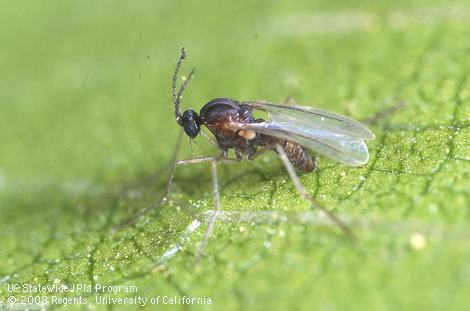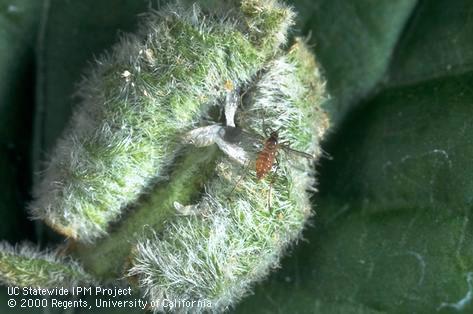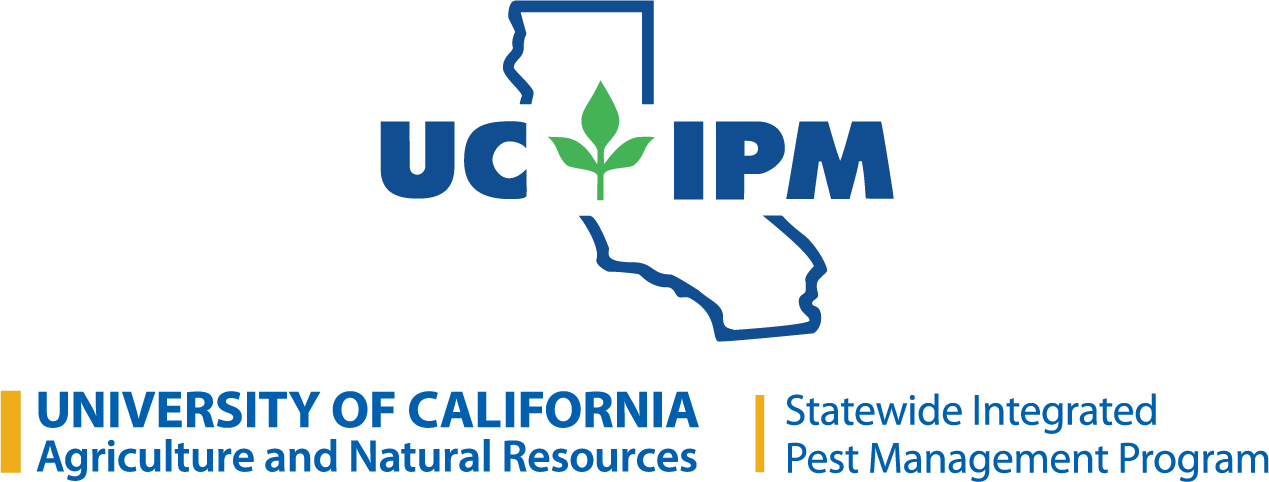There are hundreds of species of gall midges (Cecidomyiidae), also called gall gnats or gall flies. Each species feeds inside only one or a few related hosts, including coyote brush, dogwood, Douglas-fir, ficus, honey locust, oak, pine, and willow.
Pests of flowers include the chrysanthemum gall midge, Rhopalomyia chrysanthemi, and the violet gall midge, Prodiplosis violicola. Certain midges (e.g., Aphidoletes and Feltiella spp.) are predators of small insects and mites and are beneficial.

Identification
Adult gall midges are tiny, delicate flies, with long, slender antennae and legs. They resemble fungus gnats and flies in certain other families. Gall midge larvae are tiny white, yellowish, reddish, or orange maggots.

Life Cycle
In gall-making species, midge larvae bore into tissue or cause tissue to form into galls that surround the larvae, which feed inside. Most species have several generations per year.
Solutions
For flowers in planting beds, clip off galls and distorted plant parts as soon as you see them, and remove them from the garden. If you have an intolerable infestation, you may want to remove susceptible plants. Gall midges are difficult to control with insecticides.
